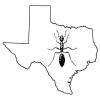Mads
I knew you were from Canada; I was just agreeing with you. 
Edit: Haha, I just noticed you said "at least the ones we have up here". Maybe you need to take that up with Crystal then. 
Are you nuts? I am not going to argue with her, she is my go to person for ID`ing species for me!
In all seriousness though, most Myrmica species in my area you need to have a good look at to differentiate the queens from the workers, it`s pretty easy once you`ve done it a few times, but they don`t stick out like many other species.
Mads
 I haven't laughed that hard in a long time...
I haven't laughed that hard in a long time...
When I said "Most other myrmicine species" I was referring to other double noded species up here like Aphaenogaster, Pogonomyrmex, Manica, etc (the last 2 obviously not a possibly for the above ID). Perhaps I was using the wrong terms, causing un-necessary confusion.
They are also clearly not Leptothorax, Temnothorax, or Solenopsis that I would see in my location. (And that is about as Alberta has for double noded species)
For the Myrmica species itself, ID of exact species is a hassle requiring a microscope and some good side views and good detailed views of the face. To determine a queen, the thorax is a dead giveaway once you know what you are looking for. This species does not look like any of the Myrmica I have seen up here though.
I was thinking along the same lines as Mdrogun, with an older Aphaenogaster colony - judging by the size of the heads and mandibles on the larger ants who look like large guards. Then again, Michigan is much warmer than northern Alberta and they would have additional species of ants that simply do not occur up here - and I would likely be unaware of (and of no assistance with IDing).
Loops, that ant with the distended gaster is simply full of food. She is not a queen, she lacks the larger thorax that a queen would have. Look in any of my Camponotus journals for numerous examples of this, it is more noticeable with species like Camponotus or Formica with larger social stomachs.



















